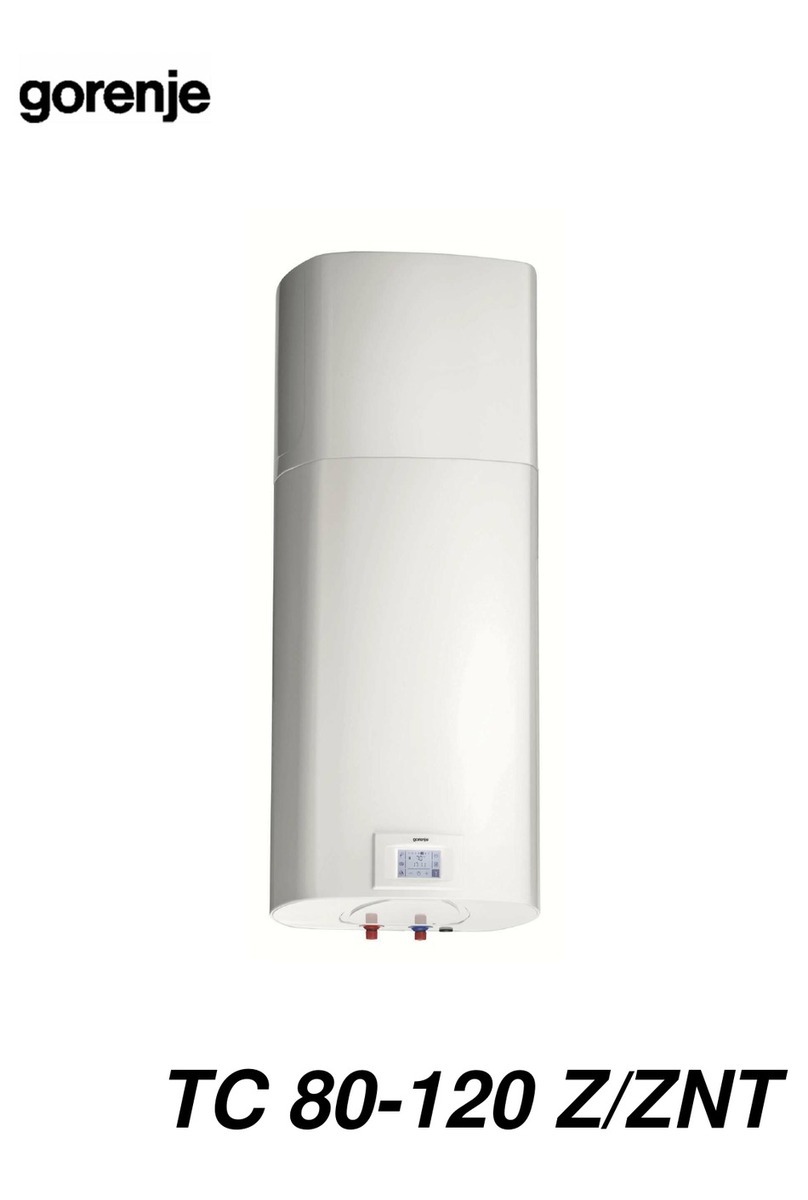
3
2 PRINCIPLE OF OPERATION OF THE HEAT PUMP
2.1 THE BASIC PRINCIPLE OF OPERATION OF AHEAT PUMP
A heat pump operates similarly as a refrigerator. In a refrigerator, liquids evaporate due to
received thermal energy from the surrounding air and this energy is emitted at a desired spot
during condensation (Carnot’s cycle). A heat pump works in the opposite direction: it accepts
thermal energy from the surrounding air and emits it in heated premises, using the natural
heat collector of the environment. Ground and surface water, earth’s warmth, solar energy
and ambient air can be used as energy sources. The system is composed of four units:
evaporator, compressor, condenser and damper. Heat energy is transferred via the coolant.
In the evaporator, the coolant receives heat energy and evaporates. In the compressor, the
vapour is compressed, which makes it heat up intensively. This hot vapour transmits thermal
energy from the condenser to the heating water and liquefies. In the damper, the coolant
expands (pressure reduces to the starting pressure, from there it proceeds to the evaporator
and the cycle repeats).
2.2 INVERTER HEAT PUMP
Inverter heat pumps use variable-speed compressors. Traditional heat pumps use fixed
power/rotation speed compressors. In inverter compressors, the compressor speed
constantly adapts to the heat losses of the room and the energy value of the source (air,
brine or water, depending on the system).
In traditional heat pumps, the power of the compressor is always the same. Compressor
starts with full power and when it achieves the desired values/temperatures, it shuts off and
waits until it restarts.
Inverter heat pumps work for a longer period of time, but with lower power (adjusting to the
premises), which means lower consumption of electric energy.
2.3 OPTIMISATION OF HEATING COSTS
2.3.1 Selection of heat pump
The first step towards the optimisation of heating costs is selecting the appropriate heat
pump. An over-dimensioned or under-dimensioned heat pump can cause higher heating
costs and shorten the lifespan of the appliance.
2.3.2 Heating curve
A correctly set heating curve is of key importance for the optimisation of heating costs. If a
room thermostat is used, the heating curve must be adjusted to the building as if it was not
existent. A too highly set heating curve can cause up to 30% higher heating costs!
2.3.3 Domestic water
Incorrect or too highly set desired temperature of domestic water can significantly increase
heating costs! In a traditional system with a 100-litre boiler, where domestic water is heated
by a heating element, the temperature necessary for meeting the needs of an average family
is much higher than in a system where domestic water is heated by means of a heat pump.
The difference lies in the quantity of the water in the water storage tank.
With heat pumps special water storage tanks are used that have a larger volume than
traditional boilers! For a heat pump system, daily consumption of 50 litres is assumed,
multiplied by the number of users of domestic water.
Example:
Family of four –4 persons x 50 litres = 200 litres





































